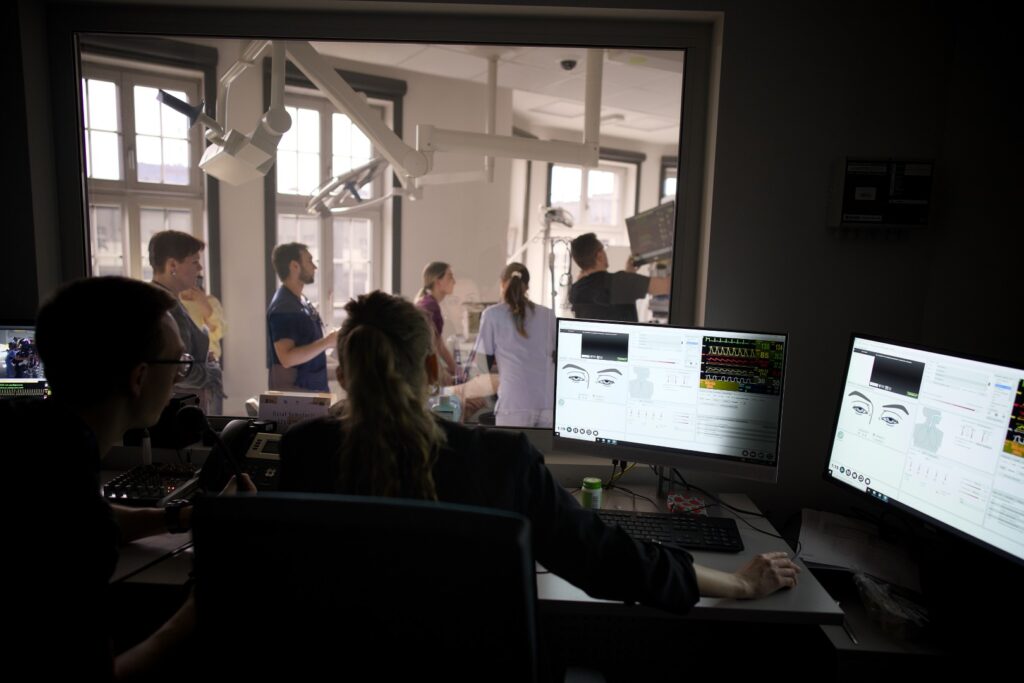Medical simulation is a modern didactic method that enables teaching through active participation in realistic scenarios played out in an environment as close to reality as possible – such as an ambulance, intensive care unit or delivery room. It combines theoretical knowledge with practical clinical skills and soft skills, particularly important in the daily work of medical teams.
Medical simulation can be divided into several types:
- high-fidelity simulation
- low-fidelity simulation
- hybrid simulation
- standardized patient
High-fidelity simulation
It uses advanced, full-body patient simulators that can speak, breathe, blink, bleed, sweat, and dynamically change vital signs. This allows for realistic representation of clinical states and the creation of conditions for making diagnostic and therapeutic decisions in real time.
The simulation rooms are equipped with authentic, modern medical equipment, including:
- resuscitation carts
- vital function monitors
- defibrillators
- intensive care beds
- ECG machines
- ultrasound devices
Students can order laboratory and imaging tests and interpret their results, which gives them the ability to comprehensively manage the patient. Scenarios are recorded in the form of audio-video materials, and the recording of patient parameters allows for their precise analysis during the debriefing session.
Standardized patient
This is a specially trained person (an actor) who plays the role of the patient in the scenario instead of a simulator. This type of simulation allows for realistic interaction – both in terms of clinical communication and establishing relationships with the patient and their family. Interpersonal skills are an integral part of diagnostics and treatment, which is why CSM places special emphasis on them.
Low-fidelity simulation
Uses mannequins and trainers that are used to teach specific technical skills – e.g. cannulation, catheterization or resuscitation. The exercises do not require a full representation of the clinical environment, but they are an essential foundation for further classes in high-fidelity simulation.
Hybrid simulation
This is a combination of a standardized patient and a trainer. For example: a student meets a patient in advanced pregnancy who is undergoing delivery using a maternity trainer or dressing realistic wounds that require stitching, placed on the actor’s body. Such a simulation combines empathetic communication with the performance of advanced medical procedures, including invasive ones.
Debriefing – a key element of learning
Each simulation session ends with a debriefing, i.e. a detailed discussion of the scenario. It is a safe space where participants receive feedback – both on correctly performed actions and areas requiring improvement.
During the debriefing, recordings from the simulation and data collected by the IT system are used. The entire process is carried out in stages and promotes self-reflection, exchange of observations and learning from mistakes – without risk to the patient.


